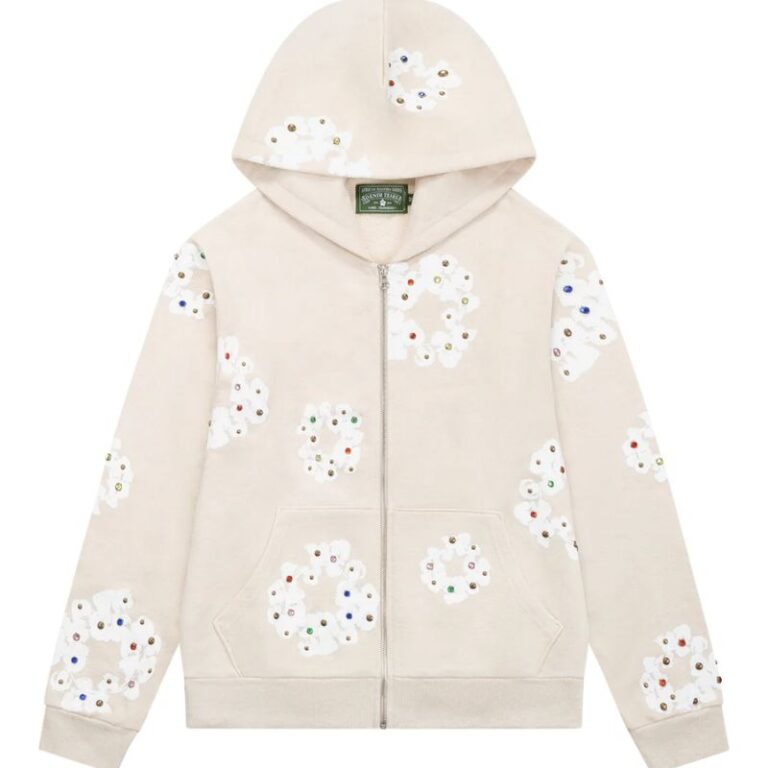In recent years, the fashion industry has been undergoing a significant transformation as brands and consumers alike embrace a more thoughtful approach to style. Among the pioneers of this change is Denim Tears, a brand that epitomizes conscious fashion through its focus on cultural storytelling, sustainability, and social awareness. This article delves into the unique rise of Denim Tears and its role in shaping the conscious fashion movement.
The Birth of Denim Tears
Denim Tears, founded by creative visionary Tremaine Emory, emerged as a brand that blends artistry with activism. Launched in 2019, the label quickly gained recognition for its powerful narrative-driven designs. Emory, who has collaborated with major brands such as Nike and Levi’s, uses Denim Tears as a platform to address historical and cultural themes, particularly the African American experience.
Cultural Storytelling Through Fashion
One of the hallmarks of officialdenimtear.us is its ability to weave stories into its garments. Emory’s designs often highlight the history of the African diaspora, including the transatlantic slave trade, the Civil Rights Movement, and contemporary issues of racial inequality. Each collection is not merely a fashion statement but a cultural artifact, designed to educate and provoke thought.
Signature Design Aesthetic
Denim Tears’ signature aesthetic is bold and symbolic. One of its most iconic motifs is the cotton wreath, which adorns denim pieces like jeans and jackets. This imagery reflects the complex history of cotton in the United States, symbolizing both economic exploitation and cultural resilience. The brand’s use of natural denim tones and earthy palettes reinforces its connection to history and the land.
Collaborations That Amplify Impact
Collaborations have been instrumental in Denim Tears’ rise. The brand has partnered with fashion giants like Levi’s and Converse, creating limited-edition pieces that merge mainstream appeal with deeply personal narratives. For instance, its collaboration with Levi’s featured denim pieces embroidered with cotton motifs, highlighting the intertwined history of the cotton industry and African American labor.
Sustainability at the Core
Denim Tears exemplifies the principles of conscious fashion by prioritizing sustainability in its production processes. Emory emphasizes the importance of using high-quality materials and ethical manufacturing practices. The brand’s commitment to slow fashion stands in stark contrast to the fast-fashion industry, encouraging consumers to value quality and longevity over mass production.
Empowering Conversations Through Fashion
Fashion, for Emory, is a medium for dialogue. Denim Tears sparks conversations about identity, race, and history by creating garments that are deeply symbolic. These pieces often serve as entry points for larger discussions about systemic inequality and the role of art in challenging societal norms.
The Role of Social Media in Building Awareness
Social media has played a pivotal role in the brand’s growth. Platforms like Instagram allow Denim Tears to showcase its collections while providing context and historical background. Tremaine Emory’s thoughtful captions and posts ensure that the brand’s message reaches a global audience, encouraging followers to engage with its themes on a deeper level.
The Growing Demand for Conscious Fashion
Denim Tears’ success is indicative of a broader shift in consumer behavior. Today’s shoppers are increasingly drawn to brands that align with their values. Conscious fashion—a movement that prioritizes ethical practices, sustainability, and social responsibility—is no longer a niche market. Consumers now demand transparency and purpose from the brands they support, and Denim Tears is at the forefront of meeting these expectations.
Challenges in Balancing Art and Commerce
As Denim Tears gains popularity, it faces the challenge of maintaining its authenticity while expanding its reach. Balancing artistic integrity with commercial success can be difficult, particularly in an industry that often prioritizes profit over principles. However, Emory’s dedication to his mission ensures that the brand remains true to its roots, even as it grows.
Denim Tears as a Catalyst for Change
The influence of Denim Tears extends beyond the realm of fashion. The brand serves as a catalyst for cultural and social change, inspiring both industry peers and consumers to think critically about the stories embedded in the clothes they wear. By blending fashion with activism, Denim Tears demonstrates that style can be a powerful tool for raising awareness and fostering empathy.
Conclusion:
Denim Tears represents a shift in the fashion industry toward a more thoughtful, conscious approach. By combining cultural storytelling, sustainability, and social activism, the brand challenges traditional notions of fashion as mere aesthetics. Instead, it positions clothing as a medium for education and empowerment.
As conscious fashion continues to rise, Denim Tears serves as a beacon of hope for a future where fashion is not only beautiful but also meaningful. Its journey reminds us that what we wear can reflect not just personal style but also collective values and histories, inspiring us to create a more equitable and sustainable world.

